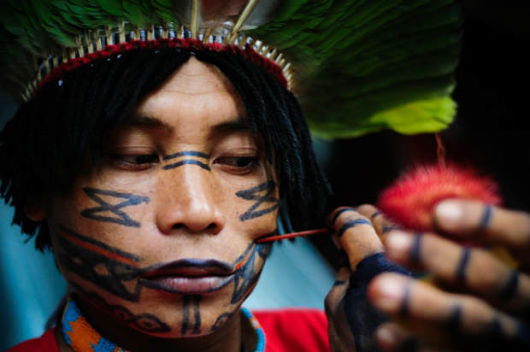The Struggle of Indigenous People in Latin America

As the world became increasingly globalized and populated, many companies struggled to keep up with the demand for their goods. When they came upon the abundance of resources and land that lay within the Amazon rainforest, those struggles seemed to melt away; however, this marked the beginning of many issues for the people living within this tropical wonderland.
The Amazon rainforest has one of the largest collections of plant and animal species in the entire world. There are countless organisms within its realm that have not even been discovered yet. However, many creatures, insects, flora and more will remain undiscovered and unknown to us because their habitats are being destroyed by large corporations clearing land for factories and plantations.
However, the flora and fauna are not the only ones in danger. Several of the indigenous tribes in the Amazon have lost their homes and sources of income and food. These individuals had learned to live off of the land sustainably and had carried on living this way for thousands of years, but are now left to find alternate methods of work and shelter with little to no time at all.
Since many of the indigenous people have gone most of their lives without a strong education, corporations are hiring them to work in the very factories for which their homes were destroyed. In these factories, workers receive meager wages and are forced to work in tough conditions; many report illnesses from the pesticides and chemicals used in the preparation of the goods that they are producing.
In most countries, the government could begin to take action against big companies coming in and destroying the environment. With the amazing profit that is being generated, however, it is no wonder that many Latin American governments are not taking the steps to prevent this movement. While this—working in factories located on land cleared in the Amazon rainforest—is the case for some, high concentrations of indigenous people can be found in urban areas. These individuals have come here to get work and perhaps to adapt themselves to a different way of life. Many of the indigenous people feel targeted as more and more laws are made to rip them from their land, forcing them into lives of submission. For many, this is not tolerable, and thus many guerrilla, anti-government militant factions gain support. However, some NGOs are ready to turn all of this around.
One NGO called Escuela Nueva is doing wonderful work to shift the focus of the classroom from the teachers to the students. This Colombian-based organization has expanded to include over 14 Latin American countries and strives to promote a new, innovative and interactive classroom style. This gives the children the feeling that they are in control of their own futures and provides them with a chance to rise up. Since 1993, several studies have shown that the techniques used in Escuela Nueva have raised grades and self-esteem, promoted gender equality and increased cooperation. This model has been recognized as one of the top education reforms in the world and has been implemented in several other developing countries.
It is hard to imagine a life without a home and without great promise of a future, but somewhere deep within the Amazon rainforest, hope is growing among a people who are not yet ready to give up.
– Sumita Tellakat
Sources: IR Online, IWGIA
Photo: Mexika Resistance
